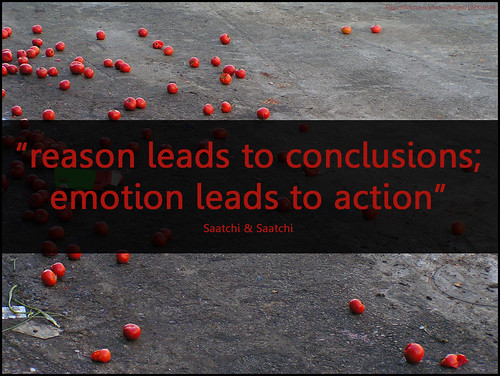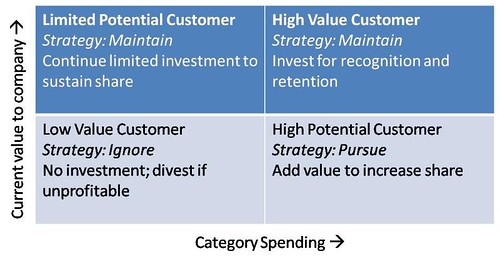
Courtesy of will-lion
The above saying by Saatchi & Saatchi aptly describes the world of marketing, where it is vital to reach the heart in order to generate a buying response. While the rational part of us would sort through the price, features, and logical needs we have for a particular product or service, it is the emotional part - the feelings, benefits, wants and beliefs - which determine the purchase decision.
To delve deeper into the topic of emotions in marketing, I recently read the book Emotion Marketing written by Scott Robinette, Claire Brand with Vicki Lenz of Hallmark Loyalty Marketing Group, a subsidiary of the hugely successful Hallmark Cards Inc (a US$4.5 billion privately-held company), which is responsible for zillions of heartfelt greetings around the world. Providing various examples of companies like Ritz Carlton, Harley Davidson, Disney, Apple Computers, Hertz and of course Hallmark itself, the main premise of the book focused on Hallmark's Value Star (sm) which is broken into five components as illustrated:

Hallmark's Value Star (sm), (c) Hallmark Cards, Inc.
As a successful and long-term marketing strategy, companies should look at both the Rational and the Emotional side of their business. While Product and Money are important elements to get into the game of any business in the first place, it is the three Es - Equity, Experience and Energy - which determines the companies that win the race for the hearts of consumers. The breakdown of what the components mean are as follows:
Product - Features and functions, quality, design, availability, and uniqueness
Money - Cost, price, promotions and other economic drivers
Equity - Brand identity (what company conveys) and brand image (what consumers perceive), covering both tangible and intangible values. This helps to engender trust.
Experience - The collection of touch points between companies and consumers, eg environment, customer service, loyalty programmes, and events.
Energy - The convenience to a customer, eg making product or service more accessible, easier to consume, more worthwhile or personalised.
According to the book, companies which possess strong brand values, positive consumption experiences (beyond the purchase decision), and convenience to their customers will win the game. They should invest in a proper customer relationship management system/loyalty management system which doesn't just apply a uniform blanket rule. Instead, they should look at their customer's buying cycle (termed the Emotional EKG) from acquisition to assimilation, cultivation and reactivation, and tailor their offers, messages and frequency of mailings accordingly.
On the topic of marketing communications, one needs to consider the relevance of the mailings, its timing, relationships between senders and recipients, frequency of the messages, and the perceived value. With the Internet (and now social media), companies have more ways than ever before to provide quality content to their customers, understand their purchase patterns, and strengthen relationships with them.
An especially useful point covered by the book was the role of employees - the other E. The same principles of caring for one's customers should be applied to employees. According to the authors of the Service Profit Chain, the more loyal and engaged employees are to the organisation, the better the quality of service they provide to customers. This in turn will result in a virtuous cycle of increasing customer loyalty, profitability and value. Using the Value Star as a framework, similar strategies could be employed for employees along the dimensions of equity, experience, energy, product and money, as well as the employee life cycle stages.
However, not everybody should be treated like a king (queen or prince). The value of a customer will determine the extent of the offers and special deals made to them, and more generous concessions should be provided to higher value customers. Hallmark has suggested that unattractive low value customers should be ignored to conserve a company's precious (and limited) resources, limited potential customers should be maintained, high potential customers pursued, while high value customers honoured. This is illustrated in the chart below:

Overall, I find that the book is useful for companies keen to implement a loyalty management system hoping to make an emotional connection to their patrons. Emphasising practical applications over theory, it comes with a useful assessment tool to develop one's "Caring Index" - the first step to developing and implementing an emotional marketing strategy. The case studies were also relevant, especially insights from Hallmark itself and how it applies principles of Emotion Marketing to both external and internal customers.Labels: book review, emotion marketing, hallmark, marketing strategy


